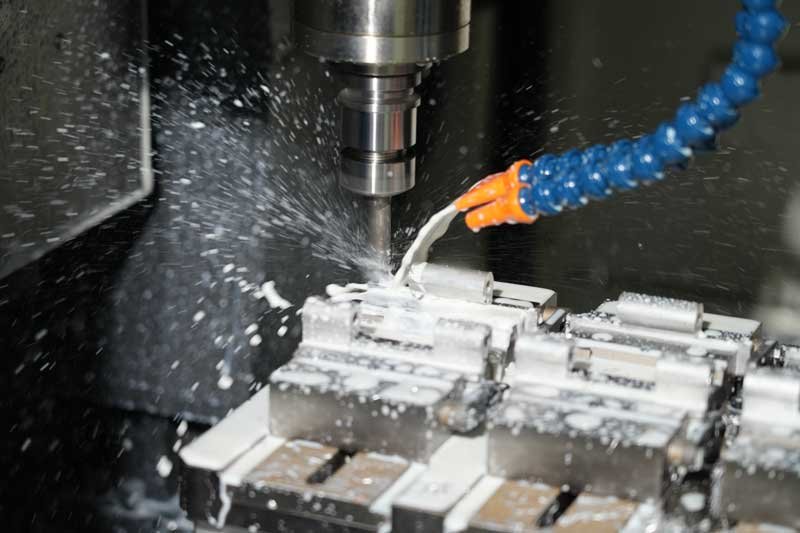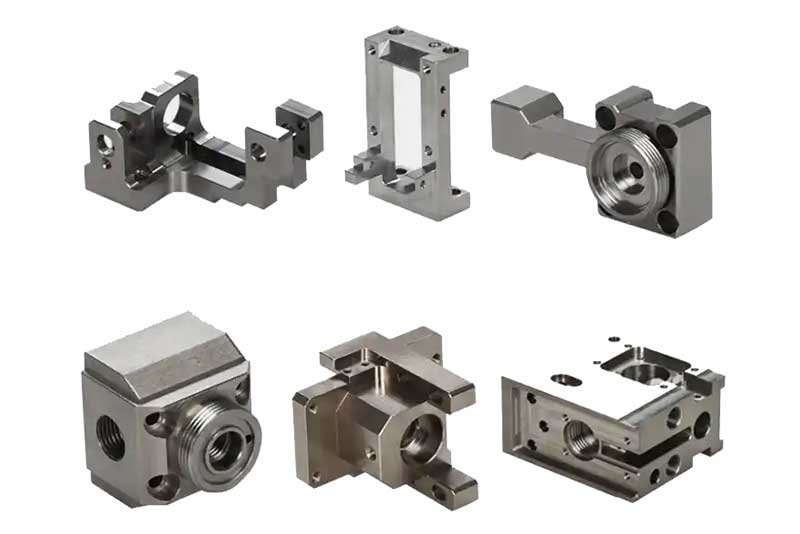Classification of Cutting Fluids
Cutting fluids are widely used in CNC lathe machining environments, continuously injecting vitality and efficiency into metal cutting operations through flexible application methods such as precise injection, fluid spraying, or fine mist.
1. Types of Cutting Fluids
In CNC lathe, cutting fluids play a critical role in lubrication and cooling.
Water-Soluble Metal Cutting Fluids
Made by adding rust inhibitors, cleaning agents, and oil additives to water. They are characterized by excellent cooling performance and certain cleaning capabilities. They are widely used in rough machining on CNC lathes and are suitable for processes where lubrication is not a high priority, as well as those requiring rapid cooling and cleaning.
Emulsified Cutting Fluid
Composed of mineral oil (50%-80%), emulsifiers, rust inhibitors, oil agents, extreme pressure agents, and preservatives, and diluted with water. These fluids offer good lubrication and rust prevention properties and become opaque and milky when diluted. They are mainly used in processes like turning, drilling, and threading and are often used in situations where rust prevention is required.
Cutting Oils
Including mineral oils, animal and vegetable oils. They provide good lubrication and some cooling capabilities, reducing tool wear and friction heat during machining. These oils are generally used for precision machining such as gear cutting, thread cutting, and machining general materials, especially in processes that require higher lubrication performance.
Extreme Pressure Cutting Oils
These are cutting oils with added extreme pressure additives such as sulfur, chlorine, and phosphorus. They are characterized by extremely high lubrication and anti-extreme pressure performance, protecting the tool and workpiece under extreme conditions. They are commonly used for the precision machining of difficult materials like titanium alloys and stainless steel on CNC lathes.
Semi-Synthetic Cutting Fluids
Composed of 5%-30% mineral oil, a suitable amount of water, and related additives to form a micro-emulsion. These fluids have good lubrication, cooling, and cleaning properties, and when diluted with water, they form stable dispersed systems with oil-in-water (O/W) type emulsions where the particle diameter is 0.05-0.1 μm. They are suitable for various machining processes, especially those requiring certain lubrication and cooling performance.
Synthetic Cutting Fluids
Composed of water-soluble rust inhibitors, oil agents, extreme pressure agents, surfactants, and defoamers, without mineral oil. They feature excellent cooling and cleaning capabilities, with some lubrication performance. After dilution, they appear as transparent or semi-transparent liquids. These are used in high-speed, high-temperature, high-precision machining processes on CNC lathes, as well as in assembly and painting processes where cutting fluid residue is sensitive.
Other Types
Fatty Cutting Fluids: Made from fatty acids, oxalic acid, and additives, offering excellent lubrication and rust prevention. Suitable for low-speed and intermittent cutting.
Solid Cutting Fluids: Composed of solid particles and additives, mixed with water before use. Ideal for heavy-duty cutting and environmentally sensitive operations.
Synthetic Cutting Fluids: Formulated with organic solvents and additives, with no water content. Designed for sensitive assembly and painting operations.
2. Selection Based on Workpiece Material
Carbon Steel
For rough machining, low-concentration emulsions (such as 3%-5%) or synthetic cutting fluids can be used. For finishing, cutting fluids should have good penetration, lubrication, and cooling properties. Emulsions or extreme pressure emulsions with 10%-15% concentration is recommended.
Aluminum and Copper Alloys
For rough machining, 5%-7% emulsions are used. For finishing, emulsions with 10%-20% concentration or kerosene can be selected to achieve lower surface roughness and higher precision.
Cast Iron
For rough machining, graphite in cast iron can serve as a solid lubricant. However, when machining special materials with high hardness, strength, and poor thermal conductivity, cutting fluids with good flow and cooling action, such as 2%-5% emulsions or synthetic cutting fluids, should be used. For finishing, 7%-10% emulsions or kerosene are recommended.
Hard-to-Machine Materials
For materials containing elements like chromium, nickel, molybdenum, manganese, titanium, vanadium, aluminum, niobium, and tungsten, cutting fluids must have excellent lubrication and cooling properties. Extreme pressure emulsions or cutting oils with 10%-15% concentration is recommended.
3. Selection Based on Tool Material
High-Speed Steel Tools
For rough machining, low-concentration emulsions or synthetic cutting fluids are used. For finishing, cutting fluids should have good lubrication and cooling properties, with emulsions or extreme pressure emulsions (10%-15%) recommended. When machining difficult materials, extreme pressure emulsions or cutting oils should be used.
Carbide Tools
For rough machining, cutting fluids with good cooling performance are needed to lower cutting temperatures and extend tool life. Emulsions or water-based solutions are recommended. For finishing, cutting fluids may not be required, or emulsions or extreme pressure emulsions with 10%-25% concentration can be use.
4. Selection Based on Machining Method and Requirements
Rough Machining
In processes with high cutting amounts and heat, use cutting fluids with excellent cooling and moderate cleaning, lubrication, and rust-prevention properties.
Precision Machining
For high surface finish and precision, choose fluids based on tool and workpiece materials and varying cutting speeds.
Enclosed or Semi-Enclosed Machining
Processes like drilling, threading, reaming, and broaching require cutting fluids with good cooling, lubrication, and cleaning properties, such as emulsions, EP emulsions, or mineral/EP cutting oils.








